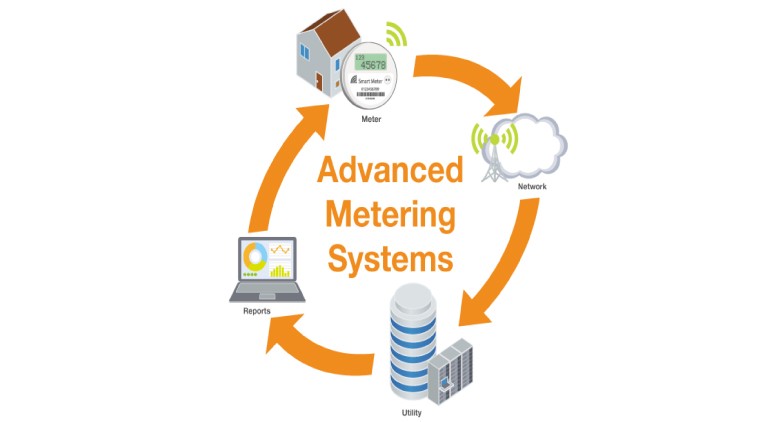Unleashing optimised AMI for reliable communication
By EPR Magazine Editorial August 2, 2019 2:08 pm IST
By EPR Magazine Editorial August 2, 2019 2:08 pm IST

An industry analysis on what parameters are looked into while setting up an Advanced Metering Infrastructure and its challenges in doing the same.
Implementing advanced metering infrastructure (AMI) delivers significant benefits to utilities, consumers and government, the three key stakeholders in an energy business. Meters have been the cash registers for DISCOMs, and metering has moved to a new paradigm with AMI, which empowers these stakeholders to manage their functions effectively. There is no other way to manage electricity metering for millions of consumers in such an effective manner. There are several key elements to be considered while setting up an AMI system by a utility.
Parameters for setting up an AMI
Implementation of smart metering requires a holistic approach towards an end-to-end solution. On the components side,smart meters, network communication infrastructure and head-end system are key elements of AMI. It also requires a comprehensive meter data management system, which integrates with utility billing, CRM and other systems. Interoperability among different makes of meters to communicate with a single head-end system, envisages, comprehend, and translate meter data into actionable intelligence.
AMI is an intelligent network management system to monitor the communication with field devices (smart meters). The design of AMI architecture favouring build-as-you-go networks and system security are important areas to be considered. Anil Daulani, Chief Executive Officer and Managing Director India,Cyan Connode Pvt Limited says, In addition, a utility reviews data analytics engine through MDM system to extract useful insights to plan its power infrastructure augmentation. Also,to make the best use of interval data to bring benefits in the areas of billing, operations, consumer benefits, regulatory compliances, and more.
For the communication technology, there are many parameters such as type of installation, terrain (hilly), green field or congested high rise buildings, etc. Some of the key elements of the system cannot be changed or modified; for example, the meter’s position is fixed, which could be inside meter box or basement hence the choice of technology should fit into the type of meter location. This highlights the importance of deploying optimised equipment in the most effective place to deliver a reliable communication platform.
AMI is a step towards transformation for the utilities. According to Ashish Tandon, Chairman, IEEMA Meter Division defining the road map for AMI is influenced by financial strength of utility, available funds from government, current AT&C losses, current IT infrastructure, analytics, consumer engagement and operational efficiency targets set by the utility.
Key challenges in deploying AMI
Having proved the strong use case for a return on investments of 2 to 3 years for large AMI deployments, in the majority of India’s urban/semi urban towns, the key challenges in deploying AMI is the lack of Central Government mandate linked with at least 50 per centproject capex funding. Daulani, says,DISCOMs and State Government’s efforts are required to change the mindset and adopt AMI in a phased manner; with the initial phase being consumers in all high loss areas as well as a town wide implementation approach. The buy-in at the highest level of DISCOMs will help to counter any resistance such as field staff or consumers etc. during implementation.
Utilities awareness and involvement in selecting a technology that includes meters,with a service life of 10 to 12 years,means that the longevity, deployment and roll out strategy is vital.Other important areas to consider when implementing AMI is the management of vast amounts of data from smart meters, which is approximately 200 times more than legacy meters are important areas to bring attention. Aging infrastructure leads to replacement of service cables and transformer fuses etc., which if not well-planned during the AMI procurement process leads to delays in field deployments. Utilities are required to leverage the smart meter benefits fully.
Comprehensive plan for deploying smart metersLooking into the business potential, Daulani says, Cyan Connode has increased its India operations and resources to roll outsmart metering projects in India. The company has established local manufacturing facilities to support Make in India initiative, and a local technical support team to manage such roll outs. Cyan Connode has optimised its RF mesh technology for rural areas to cover greater reach and penetration (up to few kms) without the need of putting cellular module in each meter.
Tandon says, The current plan for deployment of smart meters provides end to end solution in alignment with field and IT infrastructure. It also caters to the requirement of stakeholder awareness, data analytics, cyber security and consumer engagement. Deployment of smart meters now has also been linked with the consumer’s consumption pattern and AT&C losses of the utilities which would in return benefit the utilities with increased revenue generation
The key challenges in deploying AMI is the lack of Central Government mandate linked with at least 50 per cent project capex funding.
Anil Daulani, Chief Executive Officer and Managing Director India, Cyan Connode Pvt Limited
Despite tangible and intangible benefits that are provided by AMI, there is still not enough baseline data available with utilities in India to extrapolate the outcome.
Ashish Tandon, Chairman, IEEMA Meter Division
We use cookies to personalize your experience. By continuing to visit this website you agree to our Terms & Conditions, Privacy Policy and Cookie Policy.